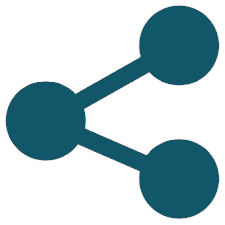Think back to when you could wander the aisles of Costco and pick up free samples. It was a tasty luxury to nosh on some not-quite-enough-to-satisfy-you bit of deliciousness. With the full package in your cart to prepare at home, of course.
As common as free grocery store samples have become, can you imagine the original “free sample” brainstorming meeting?
“Let’s give away free food,” said the marketers.
“Have you lost your mind?” said the financial gatekeepers.
“It’s just a test” responded the marketers, and the rest, as they say, is history.
Lead generation programs are like grocery store sampling (without the calories).
You’re asking prospects to give you permission to hand over some goodness—just not a full serving. In exchange for sharing their contact information, your prospects are saying “show me why I should say yes” and buy what you are selling.
Many membership acquisition strategies are built around “interruption.” Few prospects are thinking about you until you show up in their mail, news or email feed. If your campaign is a “harvesting” campaign (a direct “join now” proposition), you are looking for an immediate “yes” and a direct ROI. Send the campaign, get as many “yes” responses as you can, and watch membership grow. Campaigns like this are easy for the financial folks to understand (we spent X to get Y) and leadership likes them. It keeps your member benefits exclusive for people who have paid the price of entry.
There is, however, an alternative approach that may ultimately yield more members: cultivating, or “permission to communicate” lead generation. We call these people “try-ers” because they want to sample before they commit.
A lead generation program includes much more than a single campaign. To be effective, a lead generation program needs a conversion strategy that may include multiple communication points that aren’t just upgrade offers. The best conversion strategies meld value with upgrades so the individual doesn’t feel spammed.
Balancing Act: How much is too much when it comes to free benefits?
Let’s start with the word “free.” Who doesn’t love getting something for free? But there’s a catch. Free content, free access, free privileges all feel less valuable when the recipient hasn’t paid anything. If your paid product sounds like more of the same, you’ve just diminished any incentive to upgrade (and pay) for more.
Think of “free” as a sampler platter. Costco never limited sampling to just one item. They knew that you might be more attracted to sweet over salty, or family-style products over single-serving convenience. They spread them around the store because they know they need to be where you are when you are pre-disposed to try and buy. Likewise for a membership organization, if you show your lead prospects only one of the things that makes your community appealing, you are limiting your opportunity.
The easiest product to offer a free try-er is to just use what you already have: membership. A free year of membership sounds like a great idea at first—let someone in to experience what it’s like to be a member and they will pay for the next year…a tactic as old as membership organizations themselves.
But—it’s very important to differentiate between what your leads see and receive, and what your paying members have access to. Your try-ers are guests until they convert to full-privilege members.
Here’s why: renewal rates of free all-access members are significantly lower than those of members who paid you something. It’s human nature. We have a higher sense of value for things we pay for than something given to us at no personal cost.
There’s no way the number of people who accept a free membership and convert to a paying member in year two can cover the cost of acquisition PLUS the cost of delivering a full year of benefits to all the try-ers (including the ones who don’t convert).
Here is a back-of-the-envelope look at a first year free program using your current membership product, complete with full benefit access:
1,000 leads/free members. Assume an acquisition cost of $2.00 each … $2,000
Fulfillment costs (anything you send them like a welcome kit, or benefits you pay for based on member count or access). This can vary widely. If you have a print publication, costs could be as high as $20 per member. If your publication is digital, it may be less. For illustration, let’s use $5.00 per free member … $5,000
Renewal expenses. These free members won’t renew unless you ask them, and most organizations simply put them into the renewal series as members who have paid something to join. Assume a mix of print and digital reminders and estimate around $3.00 per free member … $3,000
You have spent $10,000 on 1,000 free members. How many will convert to paying members in year two? Experience says to plan on somewhere between 5 and 15%. If your dues are $45, a 15% conversion rate will bring in $6,750 in dues. To cover the cost of delivering everything to the 1,000 who got a free membership PLUS the upcoming cost to service those 150 members for the next year. Hole, dug. It’s a hole you’ll never climb out of (unless you have a sponsor for that first year—precedents exist but aren’t easy to build).
How to provide a sample experience without going upside down on costs
Our suggestion is to create a tailored “free” product. One that gives your prospect a Costco-like taste, without taking home the whole box for free.
Sustain their enthusiasm. Continue to remind them that your organization is a thought leader, an authority source, a gathering place for people like them.
Throughout the experience, include reminders that this is just a sample; that the full membership benefit portfolio is much more robust and satisfying, but it comes at a modest cost.
Warning: whatever you do, never call your prospects “members” if you really have an upgrade level you want them to pay for. You’ll confuse them, and you’ll confuse your team. These prospects are your guests until they cross the commitment line.
As always, there are exceptions. A client of ours has hundreds of thousands of “free” members, but their primary monetization strategy isn’t a direct upgrade to a paid level.
Warning number two: be careful about creating an artificial time frame for your leads, like “free membership for a year.” In reality, they are your leads until one of you decides to leave the field. Either they opt-out, or you decide you’ve exhausted your efforts to convert them to a monetized customer. The good news is you don’t have to wait a whole year to develop your try-ers into buyers. Conversion efforts begin immediately with a lead strategy, and continue as long as it’s cost-effective.
Many organizations have instituted free trial periods as a means of getting a soft “yes.” But—when the free member comes to the end of the trial, you have to take something away from the majority of your leads. Loss of content, loss of access, loss of privileges. In theory, that’s classic “fear of loss” motivation that should make people pay to retain the benefits. And it does, for some percentage of the audience.
Because the majority will not convert to paying members in year two, you’ve just delivered a negative message and now you’re faced with trying to claw back a relationship. You can’t give them another “free trial,” and they haven’t succumbed to your persuasion to pay after they’ve had a taste. While you might still have permission to communicate, the message has gone stale.
Your lead product is not your core product
This is the key: ask people to “sample” a relationship with you by offering them something built just for the circumstance. Don’t try to make your core membership product do double duty because it will just confuse your team and your prospects.
Create a permission-to-communicate product that delivers engaging, entertaining content, and a glimpse into the room where you keep all the good stuff.
Keep the cost of fulfillment modest, but don’t hesitate to invest in good persuasion. Reheating old content feels stale to everyone. Instead, use old content in new ways, like a collection of articles on a theme. Or better yet, a “lite” version of a more in-depth resource that’s available only to members behind the paywall. Give your try-ers a sample and make them hungry for more.
Be wary of the risk of driving prospects away by constant spamming/shilling. They already know they are prospects and expect you to try to sell them. Be persuasive, but not aggressive. It’s a big world out there online, and your reputation matters among these try-ers. If they perceive the lead offer as nothing more than a “gotcha,” you can be sure the word will spread. Be magnanimous and generous with your organizational knowledge in carefully crafted packaging.
Lead-to-conversion is a journey.
You can expect to have people in the cycle all the time, so build your system to be triggered by when they enter the journey, not when it’s convenient for you. Through testing, you’re likely to find a sweet spot for conversion. Maybe your leads need three touches, maybe four or more.
Another positive byproduct of a lead program? More sphere of influence. More people to tell your story to. If you’re an advocacy organization, it’s more people to include in your representation.
Crafting your permission-to-communicate cultivation strategy depends on your organization’s long-term goals. It’s a long game worth playing.

